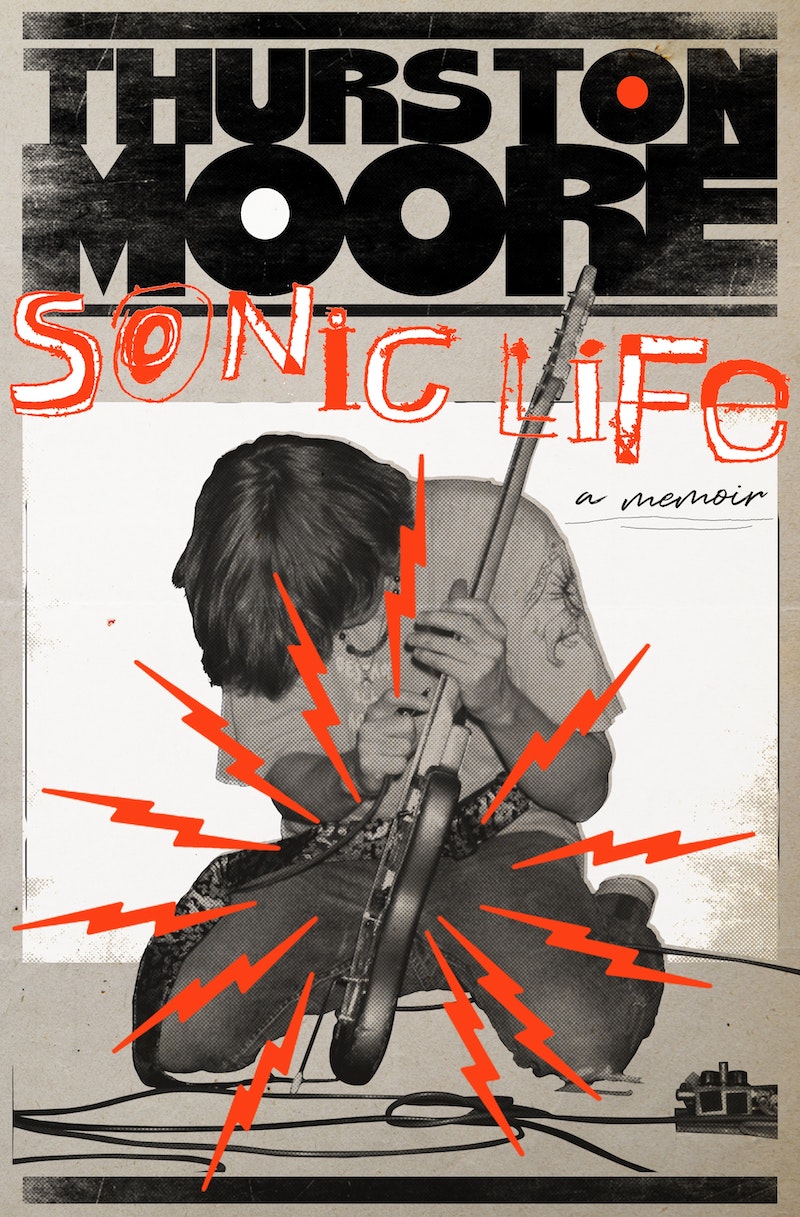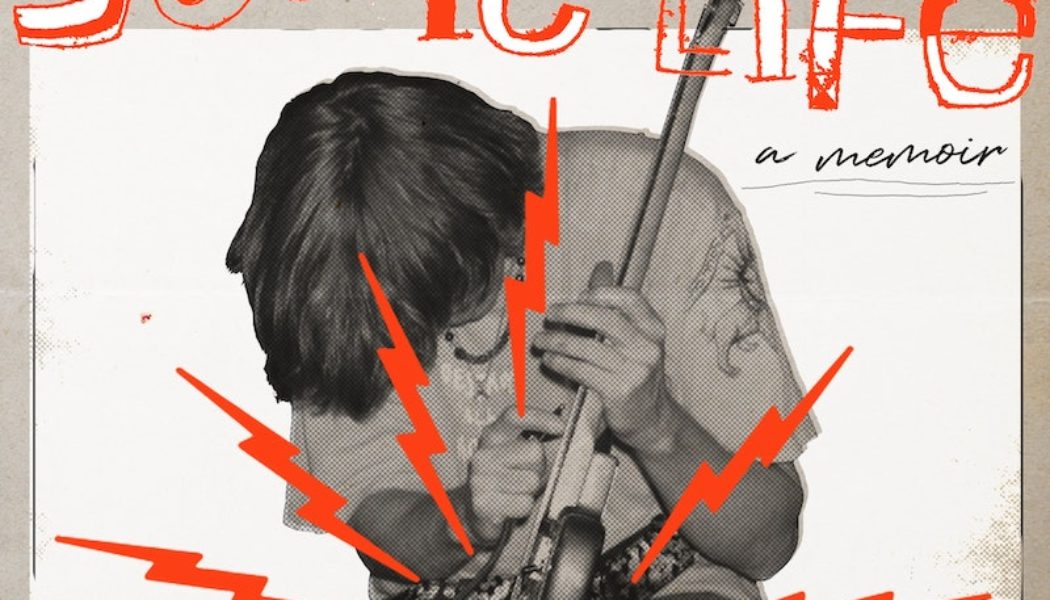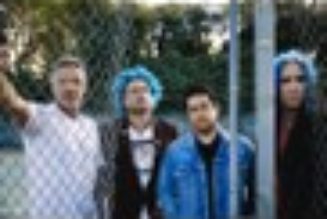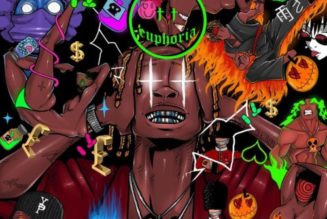In the beginning there was nothing.
Silence. Then: a bang. And then everything else. And though nobody was around
(obviously) to hear the birth of the cosmos, the echoes of that primordial
detonation linger, shaping matter and light and permeating the whole, vast,
fathomless firmament. The universe, in a meaningful way, is made of noise.
Noise is, for Thurston Moore,
singularly meaningful: He is obsessed with its implications,
its possibilities, and its sheer
noisiness. In the early 1980s, Sonic Youth—whose evolving lineup was based
around Moore and fellow guitarist-songwriters Lee Ranaldo and Kim Gordon, who was
married to Moore for nearly 30 years—was the squealing edge of the so-called “noise rock” movement. Drawing
inspiration from the avant-garde and the hard-core punk underground, noise rock
prized volume, atonality, and wild waves of amplifier feedback, provided by
cheapo guitars played in odd, unconventional tunings. The premise, basically: What
if they made a whole song out of the bad parts of songs? Noise rock took
the ostensible defects of amplified rock music and made virtues of them.

From hard-core, noise
rock borrowed a sense of confrontation, and a reclamation of the ugly. Drumsticks were jammed under fretboards;
modified guitars were whacked against amps; and the music, such as it is, rises
to impossibly loud, tinnitus-inducing pitches. Feedback had been deliberately
deployed before, by artists from composer Steve Reich to the Velvet
Underground, to The Beatles on “I
Feel Fine.” But bands like Sonic Youth
crafted whole sonic spectacles out of the conscious, wildly improvisational wielding of feedback and noise. In Sonic Youth’s music, noise was a texture, accruing like the layers of
paint on a Rothko canvas. The sound challenged audiences and pushed dinky
in-house P.A.s to their limits. “We were at war,” Moore declares, “with the
soundmen of America.” Groups like Sonic Youth bucked good standards of signal-to-noise
ratios. The noise was the signal.
Moore’s new memoir, Sonic
Life, may be accused of being
too signal-driven. For all the messiness of his music, this account of Moore’s
life is conspicuously tidy, assiduously painting Moore as a thoughtful, humble,
and fundamentally shy person. He shuns the allure of sex and drugs (“just not a
defining factor for me”) in favor of “a wholly other kind of eros than the
one found by those blessed bed-hoppers.” No compliment paid to the band, or to
Moore himself, is left unremembered (“Nirvana wore our T-shirts and sung our praises”).
Even digs are framed as backhanded compliments: When Minutemen bassist Mike
Watt tells Moore that “record
collectors shouldn’t be in bands,” the diss ultimately redounds to the author’s
benefit. The more he goes on in this vein, the harder it is to square the
Thurston Moore of the book with the Thurston Moore who played in the singular
band that was Sonic Youth.
Sonic Youth formed in
1981, when Moore and Gordon ditched their previous bands and linked up
(musically and romantically). Lee Ranaldo, a veteran of New York underground
“guitar orchestras,” would add far-out, experimental texture to the group:
“three guitars melding, chasing, and spiraling into one another,” as Moore
writes. Over early albums, the chaos and sheer noise of the group’s live shows
settled into a more conventional (but still boundary-pushing) rock sound.
The band found fans in
America’s emerging punk clubs, and in Europe, where they were feted as the
next big thing. By 1988’s Daydream Nation, the band were
standard-bearers of the indie underground that now included hard-core punk
groups like Black Flag alongside more melodic, even tuneful groups like REM and The Replacements. (Critic Robert Christgau, an early doubter of the group, was
forced to gulp and admit that Daydream Nation constituted a
“philosophical triumph.”) Major labels came knocking. By 1990, Sonic Youth had
signed with David Geffen, effectively charting the underground’s pathway into
the byways of more MTV-friendly rock styles. Lollapalooza followed. And a Simpsons
cameo. By 2008, the band was releasing compilations displayed exclusively at
Starbucks coffee stores. Even more than Nirvana, Sonic Youth’s arc tells the
story of American indie rock, and its move from the margins to mainstream, in
miniature. But you’d never get this sense reading Moore’s book.
Sonic Life is
basically a by-the-numbers rock star bio, about a dweeby small-town kid who
falls in love with music, raids the cheap bins at records stores, cuts his hair
to look like Iggy Pop, and, in the late 1970s, moves to lower Manhattan to make
the scene. For its first hundred or so pages, Moore rattles off the names of
bands he saw, like a birdwatcher recounting their life list: Patti Smith,
Television, Suicide, New York Dolls, Siouxsie & the Banshees, The Nuns,
Wire, PiL, Crass, Ut, DNA, 8 Eyed Spy, Bush Tetras—bored yet? He rubs shoulders
with William Burroughs, Sun Ra, and Joey Ramone, casting himself as a
Zelig-like figure in the New York underground he would, in time, come to rule.
Moore’s writing is
often possessed of a grating imperiousness. He was “living in this city for the
ineffable connection it afforded us,” he writes of New York City in the late 1970s, “the wild community of artists, poets and musicians giving voice to an environment
rife with trash, chaos, and absurdity.” He is ahead of the curve on hard-core,
on hip-hop, and on any other genre regarded charily by the snootier members of
New York’s “seen-it-all” scenesters. “To walk
into a CBGB matinee and see Bad Brains was to share a room with one of the
greatest bands in the history of rock ’n’ roll beyond any doubt,” he writes,
with the air of some conquistador of cool who believes he’s discovering
something.
Of course, the thing about coolness is that it diminishes the minute
someone insists upon it. And Moore’s repeated invocations of his impeccable
taste, his progressive politics (he spends two pages in anguish over the
feminist, and anti-feminist, implications of hanging a nudie calendar on his
apartment wall), and his own downtown art-punk bona fides can feel a
little unrelenting. Especially because Sonic Youth and their music are already
synonymous with a certain strain of disdainful cool. Of course, not everyone
bought it. In his classic chronicle of the American indie rock underground, Our
Band Could Be Your Life, Michael Azerrad
notes that certain segments of the scene regarded the group as “charlatans
borrowing promotional ideas from the art world to browbeat the underground into
building a consensus of cool around them.”
It wasn’t just their
mix of hypnotic guitar noise and punk-rock energy. Their lyrics conveyed a
sneering nihilism (“I can’t get laid ’cause everyone is dead,” Moore mewls on
“Stereo Sanctity”). They built a totalizing aesthetic, trading in images of
serial killers, a borrowed beat lexicon (“yr,” “becuz,” “kool”), and art
school meta-jokes—the cover of their 1995 record Washing Machine features two
fans wearing Sonic Youth T-shirts; the band also released its own T-shirt
emblazoned with the image of a woman wearing a Sonic Youth T-shirt.
Like all truly cool
bands, basically anything Sonic Youth did became cool, by mere virtue of their
doing it. They got away with underground no-nos: like sending promotional clips
to MTV, covering Madonna tunes, or signing with a major label. Their shrugging,
whatever-man attitude managed to insulate them from the standard sell-out
criticisms. And that attitude, as Azerrad has written, proved particularly
useful to music industry honchos, among whom there existed, “an unspoken understanding that
[Sonic Youth] were so cool that their chief function was as a magnet band, an
act that would serve mostly to attract other, more successful bands.” This
status wasn’t lost on their contemporaries either. The pioneering riot grrrl
punk band Bikini Kill sang:
If Sonic Youth thinks you’re cool
Does that mean everything to you?
Moore, of course, quotes these lyrics as further evidence of his group’s
“role model status.” He frames everything—from Sonic Youth’s move from
exploratory wailing to four-minute rock singles, to the changing power dynamics
of the band—as natural and intuitive, never opportunistic or crassly
commercial. Perhaps that’s true. But the constant flexing, and general lack of
reflection, grows tedious. One presumes that anyone reading Thurston Moore’s
autobiography already believes that Sonic Youth is a great, and very
influential, band.









